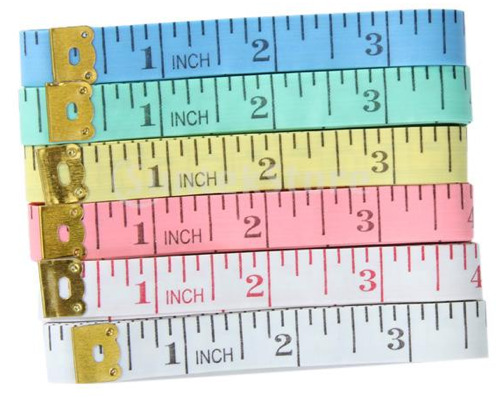Before you head out in search of bargains, you have to do some personal research about where things stand in your wardrobe. If you’re on a budget, then you have to make every purchase count. Remember: the most expensive item you own is the one you never wear.

Step One: Know what actually fits you
Start by buying a tailor’s measuring tape. They’re only $2.
Next, get measurements of your body. You can use these PDFs and these videos for suits and shirts as a guide. Try to get a few measurements, ideally from a few different people, so that you can hone down on the right numbers. Discard the anomalies and figure out the averages.
If you already have well-fitting clothing, then take some basic measurements of those as well. You can use this as a guide for jackets, for example, to learn how to do this properly. Compare these numbers to those that you find on eBay and StyleForum’s Buying and Selling section. These numbers will also be helpful if you decide to use online made-to-measure programs.
Not sure what properly-fitting clothing looks like? Here are some resources to brush up:
Put This On:
Esquire:

Step Two: Take inventory
Figure out what you have and organize it into a list of categories. Decide what can be salvaged with a little tailoring and what can be either sold or donated. If you haven’t worn it in a few years (or shouldn’t be wearing it at all), then get rid of it. You need to pare things down to what you regularly wear and what’s actually nice and fits you. This will then help you with your next enormous task – figuring out where the holes are in your wardrobe.
Step Three: Create a “buy” list
First and foremost, don’t look at this list as a wishlist and put every cool piece of men’s clothing that you’ve ever seen on here. You need to take a look at your life and what, exactly, clothing you need to suit your lifestyle.
Think about the basics you need for the entire week and develop a list based upon that. Identify what items you’d wear a lot and don’t currently own (or need replacing because yours don’t fit properly).
It also helps to keep in mind that the simpler you go, the more easily you can mix and match items. Garments in solid colors, neutral tones, and classic designs will be best for this purpose. It may be tempting to buy some crazy sport coats you’ve seen, but these shouldn’t be your first acquisitions. You want to build a wardrobe, not a collection of outfits, and that means starting with a foundation of basic and versatile staples.
Not sure what this list should include? Perhaps consider taking a look at Put This On’s suggested essential men’s wardrobe list. If you want some other perspectives, check out Alioty’s tagged “essentials” posts at This Fits. Ideally, you should create your own list.
(This post is part two in a series of five. Read other Ramen Noodle Budget posts here. Our next post will be on Thursday, on the topic of where to shop for the absolute best deals on used and new clothing. Previously: An introduction. Closet image via 16520man on StyleForum)







